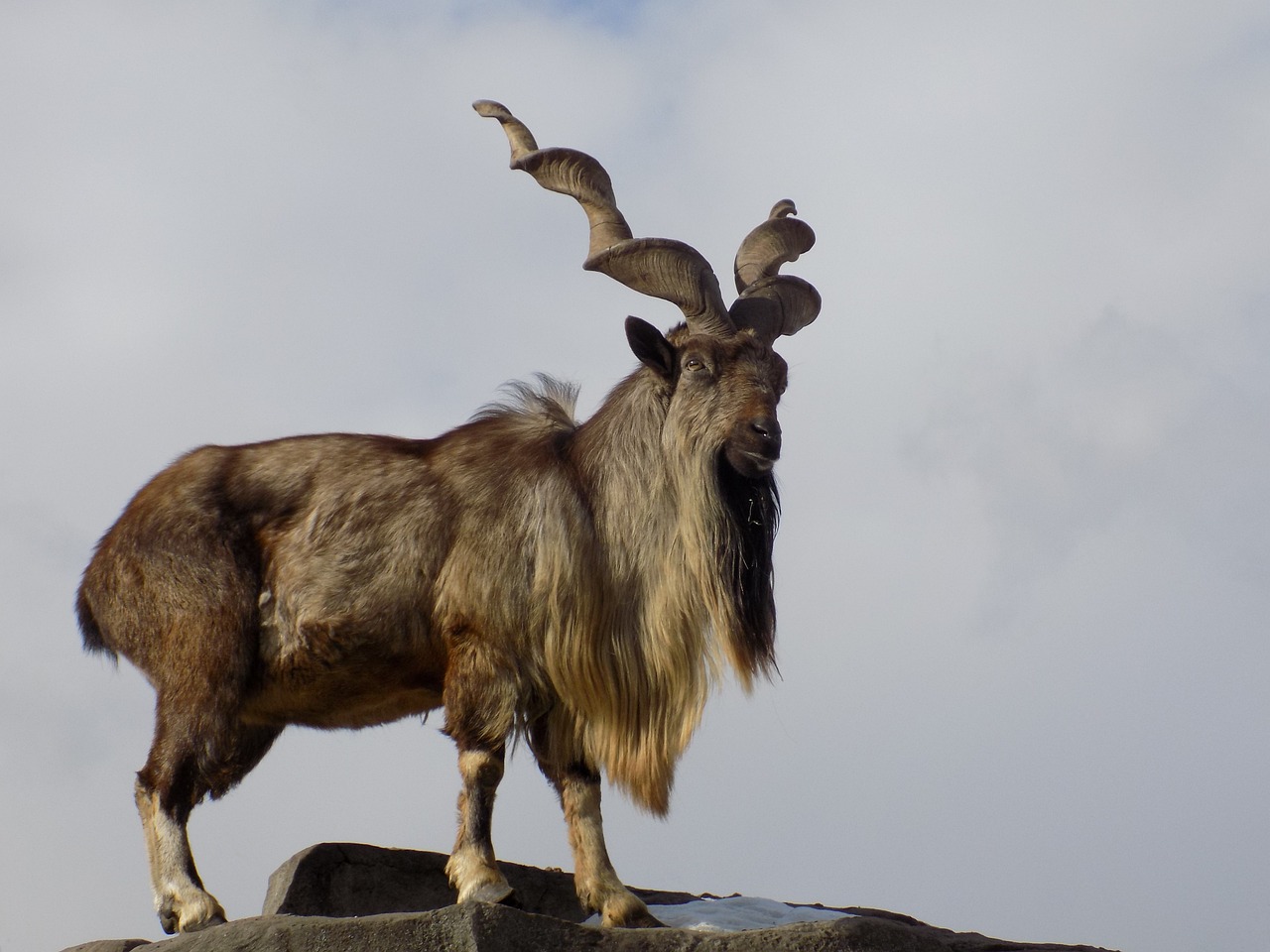JOURNEY FROM EXISTENCE TO EXTINCTION
Episode 2
Markhors: The Majestic Himalayan Goats

Have you ever thought of the most fascinating creature in the world? Add Markhors to your list. Markhors are large goat species with striking spiral horns, usually found in the depths of the great Himalayan mountains. Their name originates from the ancient Pashto language, meaning “the snake killer”.
Labeled as the national animal of Pakistan, Markhors play a vital role in the ecosystem's maintenance by attracting tourists, which benefits the local community in countless ways. These wild goats aid in the spread of wild grass and also serve as an important food source for larger mammals in the food chain like the snow leopards. Their grazing habits are also extraordinary as they feed on selective plants, maintaining a balance with the nearby species.
But will this system be conserved for long?
In recent years, the markhor population has been recorded to be from 3,500 to 5,000, which is strikingly low. This number is the result of many human activities.
Humans have exploited the mountains by cutting down trees to construct infrastructure to promote tourism and accommodate the locals, which inevitably results in habitat loss. This plays a vital role in the extinction of Markhors. Domestic livestock also threatens the Markhor community, as they often graze in similar areas, depleting food resources for the Markhors. Similarly, Markhors are also vulnerable to diseases transmitted by livestock, such as foot-and-mouth disease. Tamed farm dogs are also prone to attacking the Markhors, which could lead to the Markhors getting injured and some of them being killed too.
Our majestic goats are also victims of illegal hunting practices because numerous parts of the Markhor’s body, such as their horns, are believed to have special medical properties which attract hunters. Sadly, locals also consider Markhors as a source of meat, whereas in some areas hunting the Markhor is a cultural heritage and is widely practiced despite the restrictive laws. This leads to direct reductions of the Markhor population while reducing genetic diversity, making it difficult for them to adapt and battle against their unpredictable living conditions.
Trophy hunting, an act of hunting down animals and displaying their bodies as trophies, is a practice that has recently been put to use by the authorities of Pakistan as a way to promote economic activity in the country's northern regions. This practice leads to significant declines in markhor populations, especially when combined with other threats like habitat loss and poaching. Moreover, targeting males with impressive horns negatively impacted the gene pool.
However, trophy hunting was a miracle. It gained recognition from the rich and soon acquired massive funding to conserve the Markhor population. They invested in habitat protection, anti-poaching efforts, and community development projects. The locals were educated about the importance of Markhors on a large scale, which resulted in the termination of all activities that threatened the Markhors.
In further efforts to save our precious Markhors, protected areas are set up. These designated regions provide a sanctuary where Markhors can thrive, free from human disturbances and threats. These areas provide the Markhors with adequate food sources and breeding grounds. The government also partnered with agencies and NGOs to launch projects aiming to protect the Markhors and also to spread awareness. For example, the Safari Club International Foundation has partnered with the Wildlife Conservation Society (WCS) to help recover markhor in Pakistan.
Considering all the efforts, the Markhor population in Pakistan has seen a substantial increase. Pakistan also proposed to the UN the idea of International Markhor Day; consequently, the world shall celebrate “the majestic Himalayan goats” each year on May 24.
Markhors are living examples that efforts of preservation are never a waste, and the future generation shall know the glory of the largest wild goat species.
Similar Post You May Like
-

CFCs, HFCs and their long, troubled history
At its peak, the ozone hole covered an area 7 times larger than the size of Europe, around 29.9 million km2, and was rapidly expanding
-

The Origin of Universe: Deciding point where it all began!
Let us unravel and surf through the ideas throughout ages to understand what the universe and its origin itself was to its inhabitants across history.
-

The Artemis Program
Inspired by the Greek goddess of the Moon, twin sister to Apollo, the artimis program was named on 14 May 2019 by Jim Bridenstine.







